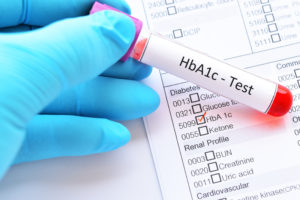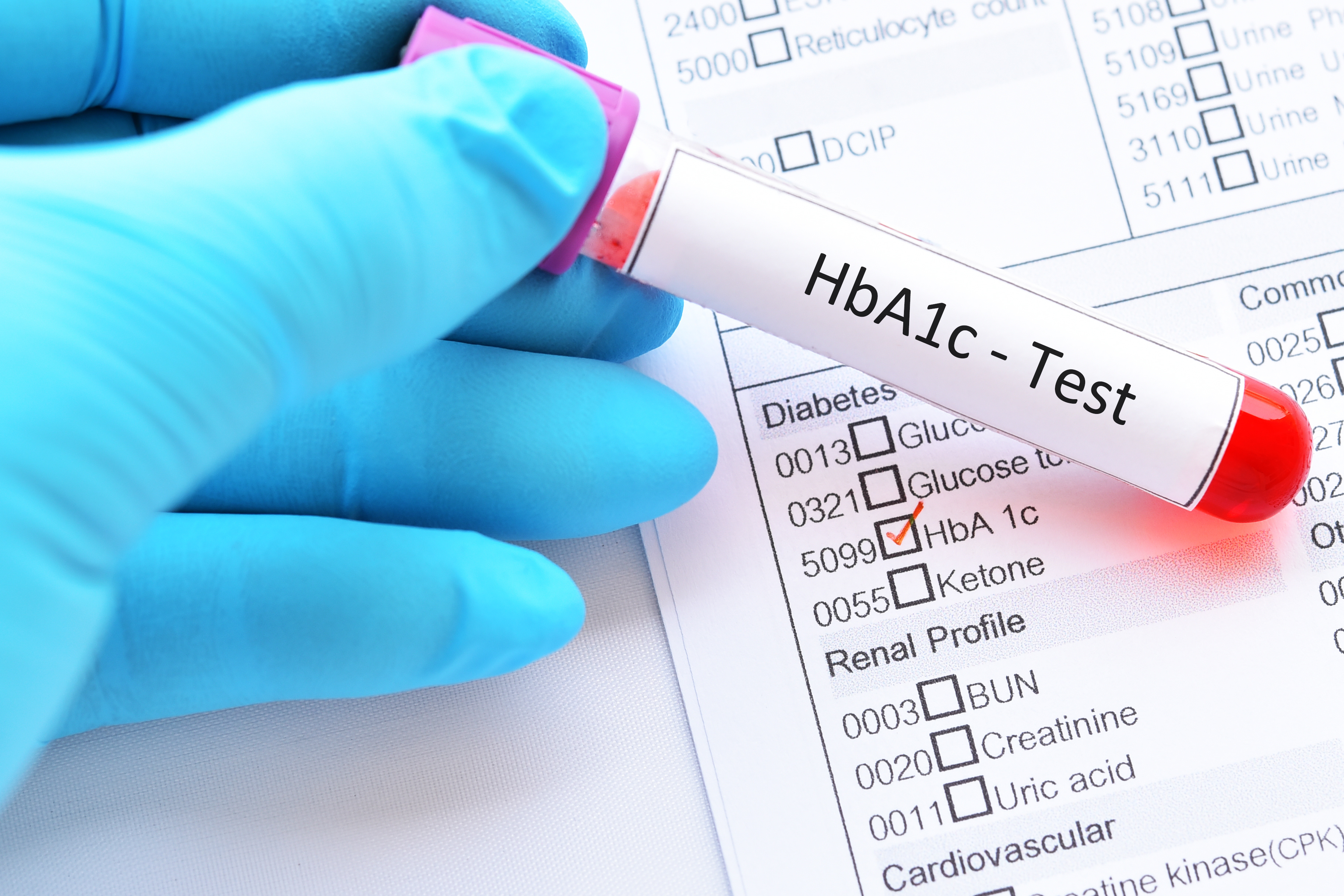
Testing for Diabetes
You should get tested for Diabetes mellitus (also called DM or just “diabetes”) if you’re frequently experiencing symptoms that include:
- Extreme thirst and hunger
- Fatigue or feeling tired
- Urinating often
- Having wounds that don’t heal
- Weight gain or loss
- Having blurry vision
- Feeling irritable
Also, it is wise to get tested according to the American Diabetes Association (ADA) if you belong to or have any of the following:
- You’re overweight or obese (body mass index more than 25)
- You live an unhealthy (inactive) lifestyle
- You have parents/siblings or a family line with diabetes
- You are African-American, Native American, Latino, Asian-American, a Pacific Islander
- You have high cholesterol or triglycerides, high blood pressure, or heart problems
- You have a history of insulin or high blood sugar problems
- You are more than 45 years old
Diabetes is diagnosed with blood tests that may include fasting blood sugar, glucose tolerance test, or HbA1c. According to the ADA, diabetes can be diagnosed if any one of the following criteria is met:
Glycosylated or glycated hemoglobin (HbA1c) equal to or greater than 6.5%
A fasting blood sugar (FBS) of 126mg/dL (7.0 mmol/L) or higher- fasting means that the person has not consumed food for 8 hours before a blood sample is taken.
An Oral Glucose Tolerance Test (OGTT) blood sugar level of 200mg/dL (11.1 mmol/L) or higher- this is taken two hours after drinking the recommended 75-gram solutionfor the test
A random blood sugar reading of 200 mg/dL (11.1 mmol/L) or higher – monitoring of blood sugar levels may be advised by doctors for individuals with classicsymptoms of high blood sugar.
These blood tests will be ordered by your doctor and may require preparations, or a number of steps to complete. Blood will be drawn from your vein and sent to a pathology laboratory. Once you receive your test results, discuss with your doctor so you can fully understand and clarify concerns.
Typically, testing positive for diabetes once isn’t enough to be diagnosed with the condition. Your doctor may order a repeat test (or other confirmatory tests) at another date to verify and make the diagnosis.
Preparation for Fasting Blood Sugar
Your doctor may have ordered a fasting blood sugar or FBS test for you. This has a preparation which involves not eating or drinking (except water) for eight hours before having your blood sample taken. Specific instructions such as the number of hours for fasting can also be instructed by your physician.
What Happens When You Fast?
During the time that you fast before your blood sample is drawn, a hormone inside your body called “glucagon” is stimulated. The stimulation of glucagon naturally elevates the blood sugar levels in your body. If you don’t have diabetes, your body will produce the regulating hormone “insulin” so your body canregain its balance, and bring down your blood sugar levels to normal range.
However, if you have DM, two things can happen. Your body will not use insulin effectively, so your blood sugar levels will not normalize (which is typical in diabetes type 2). Or your body does not produce sufficient insulin to bring back the balance in your blood sugar levels (which happens in type 1 diabetes).
What is Fasting Blood Sugar used for?
Apart from being used as an indicator for possible diabetes, FBS can also examine the effectiveness of dietary and lifestyle modifications you are doing in relation to your blood sugar levels. The effect of different medications on your system (especially if you already have diabetes) will also reflect in your result.
Further, your blood sugar can increase as a result of medical conditions such as “Cushing’s syndrome,” “pancreatitis,” or “eclampsia,” and other disorders that affect your kidney or liver.However, these conditions are often diagnosed by your doctor using more specific laboratory tests.
FBS Normal Range and Values
3.9 – 5.5 mmol/l (70 – 99 mg/dl) – generally, this range will be interpreted by your doctor as normal.
5.6 – 6.9 mmol/l (100 – 125 mg/dl) – a little over the normalmay indicate a pre-diabetic stage or that you may have started to develop impaired blood sugar tolerance. This implies that you need to have major lifestyle and diet changes to prevent or delay a full-blown diabetes state.
7.0 mmol/l (126 mg/dl) or higher – typically, this may alert your doctor to run a second test or order other confirmatory tests, as this may mean that you already have diabetes.
Glucose Tolerance Test
This medical test checks how your body processes sugar (glucose). The test has different versions, but the most commonly used is the oral glucose tolerance test or OGTT. In this test, you will be instructed to take a beverage that is mostly sugar in content. Then, your blood will be taken to check for your blood sugar after two hours (or as requested by your physician).
Preparation for OGTT
No restrictions in your usual intake of food days or weeks before the test is done. The preparation begins a day before the actual test, where you need to fast from eating/drinking for 8-12 hours before the test (or as per instruction of your physician).
What happens during OGTT?
1. Typically, the procedure starts when your first blood sample is taken in the morning, upon your arrival at the laboratory.2. You will then be instructed to drink a high-sugar solution within five minutes.3. After 2 hours (or depending on the interval and number of times requested by your doctor), your blood sample may be drawn to test for your blood sugar or insulin levels.
OGTT Normal Range and Values
Less than 140 mg/dL – Normal
140 mg/dL – 199 mg/dL – Pre-diabetes
200 mg/dL or higher – Diabetes
HbA1c
Another simple but useful screening for diabetes also used to monitor the blood sugar control of individuals who already DMis referred to as hemoglobin A1c, glycated, or glycosylated hemoglobin, or simply HbA1c. What makes this different from other sugar tests is that it gives an approximate of the sugar (glucose) in your blood over the last few months.
Why is the test done?
Doctors may recommend individuals with diabetes to have an HbA1c test every 3-6 months, as this can show blood sugar levels over the past 8 to 12 weeks. If the result for this test turns out elevated, this may indicate an increased risk for diabetes, or that you have a greater risk for developing complications with your kidneys, eyes, and other major organs.
For individuals who have DM, HbA1c may be used with a home blood sugar monitoring device to give a picture of whether medical management is effective.
Preparation for HbA1c
HbA1c is a simple laboratory test that can be completed with no preparation required. After your blood sample is taken, results will be available no more than 24 hours.
Normal Range and Values
3.5-5.6% (15-38 mmol/mol)- considered as the normal rangefor HbA1c
5.7-6.4% (39-46 mmol/mol) – this may mean you have poor control of your diabetes. Or if you have not been diagnosed before, you may be in a pre-diabetic phase. Also, yourphysician may make a diagnosis of diabetes after running confirmatory tests to verify.
6.5% (48mmol/mol) or higher – is generally considered to mean you have diabetes; but a repeat test may be requested by your physician to confirm the results, especially if you have no symptoms.
It is important to know that there are medical conditions, such as anemia, that can affect your HbA1c result, so you need to talk to your doctor to understand your results.
